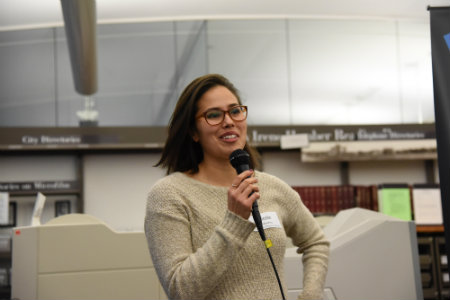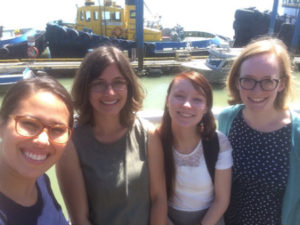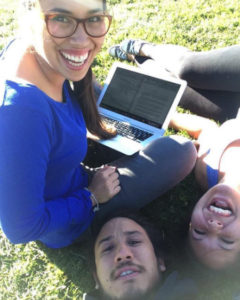My experience with Landscapes of Injustice has been (and continues to be) an invaluable one. On both academic and personal levels, this work invigorates, motivates, and challenges me in ways I would not have thought possible before stumbling upon the project in March of 2016. There are few moments that seem overwhelmingly “meant to be” – for me, discovering Landscapes was one of them.
My academic career prior to joining Landscapes was limited to three years of undergraduate studies spent at three different universities between two different provinces. This wasn’t because of a lack of love for learning, but rather, a lack of both direction and inspiration. At the University of Toronto, I (finally) started building a foundation in the Book and Media Studies program (with minors in History and Music History & Culture), but it wasn’t until the opportunity with Landscapes arose that I started to feel like my passions – for social justice, for greater historical understanding, for communication and community – could be both realized and utilized.
Last summer, I had the privilege of taking on my first term of research in the Land Title and Government Records cluster as the recipient of the Hide Hyodo-Shimizu Research Scholarship (offered jointly by the NAJC, Landscapes of Injustice, and the Shimizu family). I met the incredible folks of the Landscapes research collective at the project’s annual Spring Institute and I began working closely with historical records, looking for some answers to the project’s big questions: why did the dispossession of Japanese Canadians occur? Who benefitted from it? How has it been remembered and forgotten? I became gripped by the policies and stories of the dispossession, particularly of Eikichi Kagetsu, a well-established logger in Fanny Bay on Vancouver Island. I explored the complexities of his property loss and the diverse conceptualizations of value evident in his story, developing my own questions along the way: how are we, as members of Canadian society, honouring different understandings of value? Are we disregarding value’s diversity when we neglect to see value, for example, in a house which is someone’s home? And if we are, what are the consequences of that? I remain motivated by these questions today.
Nicole, Alissa Cartwright, Mikayla Tinsley and Anna Gooding meeting for lunch – members of the Land Title and Government Records cluster, summer 2016. Photo credit: Nicole Yakashiro
While Landscapes of Injustice is foremost an academic research project, it has also offered me an entry-point into Japanese-Canadian, student, and activist communities. I am indebted to the peers and colleagues I’ve met through Landscapes (who have all revealed to me the strength of collaboration), to my fellow members of the Landscapes Scholarship & Activism forum (whose dedication to making scholarship that matters inspires me daily), and to the Japanese-Canadian community, especially the JC Young Leaders (who have provided me, as a yonsei, a place to begin understanding myself).
Nicole relaxing with Jeff Tanaka, and Angela Kruger during some downtime at the NAJC AGM and Conference in Calgary, September 2016. Photo credit: Angela Kruger
As I embark on my second term of research with Landscapes, I find myself reflecting on the troubling, yet important relevance of this project. I also find myself recognizing the significance this work has had in my life, both academically and personally, in less than a year. I am so very grateful for this project and everyone I have encountered through it. Landscapes of Injustice is incredibly worthwhile and I strongly encourage students to apply for this year’s Hide Hyodo-Shimizu Research Scholarship – it is an exceptional opportunity.




Trackbacks/Pingbacks